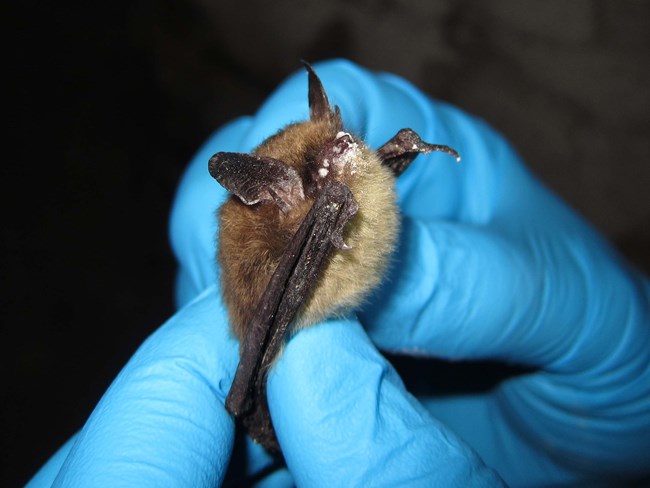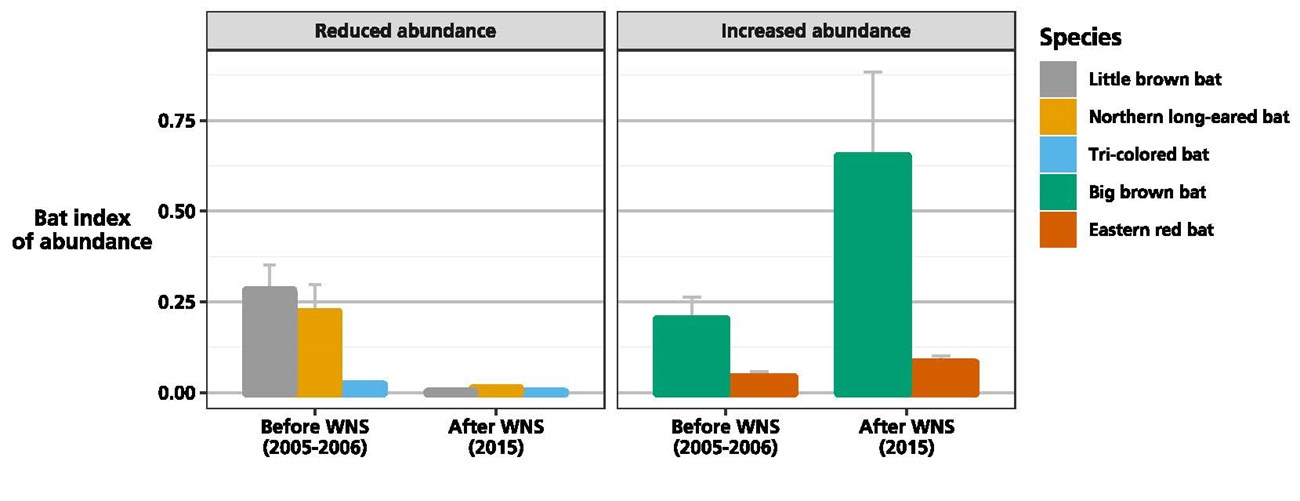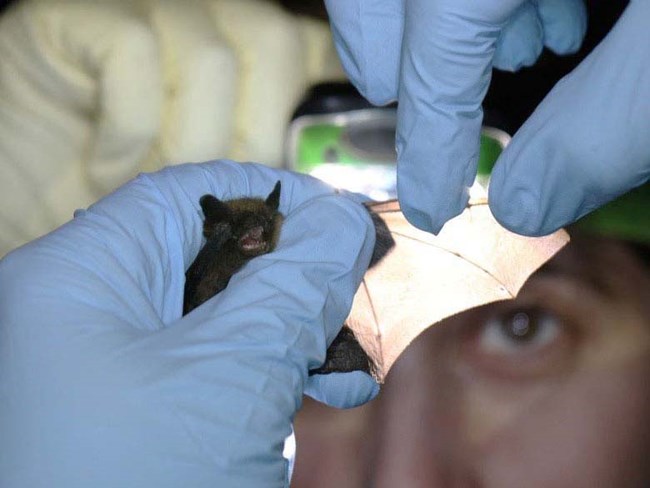Last updated: January 6, 2020
Article
Bat Population Monitoring in western Pennsylvania national parks

Photo courtesy of Steve Taylor / University of Illinois (CC BY 2.0)
Why is the National Park Service interested in bats?
Bats are an important part of ecosystems and food webs. Though some species of bats feed on fruit, seeds, or pollen, the species that live in Pennsylvania are insectivores. They consume huge numbers of insects every night, filling a unique ecosystem role as nocturnal insect predators. Unfortunately, a new disease called white-nose syndrome is affecting bats across the United States. To better protect bats, biologists are studying how local bat populations are changing.
National parks in this study:
- Allegheny Portage Railroad National Historic Site
- Flight 93 National Memorial
- Fort Necessity National Battlefield
- Friendship Hill National Historic Site
- Johnstown Flood National Memorial
Research Highlights
- Several species of bats in western Pennsylvania national parks have declined dramatically due to white-nose syndrome.
- Once relatively common in these areas, the little brown bat and the federally threatened northern long-eared bat are now generally rare.
- In all, seven species were documented across the parks.
How do biologists study bats? What have they learned about bats in western Pennsylvania national parks?
Biologists have creative ways of studying these unique animals. Bats use echolocation to navigate and catch insect prey during the dark of night. People can’t hear these bat calls, so biologists use special microphones, called acoustic detectors, to record the sounds. By analyzing the bat calls, biologists can identify which specific bat species are present in an area during certain times of the year.
Scientists recently examined bat populations in five national parks in western Pennsylvania. They compared pre-white-nose syndrome results to information they had collected from the parks prior to the occurrence of the disease.
During 2005-2006, before white-nose syndrome began infecting bats, scientists used acoustic detectors to measure bat activity. They also used nets to catch bats during the night. Biologists sampled bat populations again in 2015, after white-nose syndrome began affecting bats. In all, seven species were detected and it is clear that the abundance of some species has declined dramatically. White-nose syndrome is almost certainly to blame.

The little brown bat (Myotis lucifugus) was the most commonly captured bat prior to the arrival of the fungus. Unfortunately, little brown bats now appear to have been essentially eliminated from these national parks. The northern long-eared bat (Myotis septentrionalis), which is protected by the Endangered Species Act, has also nearly disappeared from these areas.
Not all bats species have declined. Big brown bats (Eptesicus fuscus), which are less susceptible to white-nose syndrome, may even be increasing in number in these national parks.

NPS photo
What is the National Park Service doing to help bats?
The data being collected on bats will help park managers conserve bats and their habitat. Protecting hollow trees and snags where bats raise their young and preserving mature hardwood forests will help reduce the impacts of the disease. White-nose syndrome remains an extraordinarily dangerous threat to bat populations—sadly, some species may ultimately disappear from the region.
The National Park Service continues to fund additional research on white-nose syndrome in national parks across the Northeast.
What to learn more?
For more information:
Contact Brynn Bender, NPS Western PA Chief of Resources
Download a printable pdf of this article.
